Craig A. J. Kemp
Pixel-weighted Multi-pose Fusion for Metal Artifact Reduction in X-ray Computed Tomography
Jun 25, 2024Abstract:X-ray computed tomography (CT) reconstructs the internal morphology of a three dimensional object from a collection of projection images, most commonly using a single rotation axis. However, for objects containing dense materials like metal, the use of a single rotation axis may leave some regions of the object obscured by the metal, even though projections from other rotation axes (or poses) might contain complementary information that would better resolve these obscured regions. In this paper, we propose pixel-weighted Multi-pose Fusion to reduce metal artifacts by fusing the information from complementary measurement poses into a single reconstruction. Our method uses Multi-Agent Consensus Equilibrium (MACE), an extension of Plug-and-Play, as a framework for integrating projection data from different poses. A primary novelty of the proposed method is that the output of different MACE agents are fused in a pixel-weighted manner to minimize the effects of metal throughout the reconstruction. Using real CT data on an object with and without metal inserts, we demonstrate that the proposed pixel-weighted Multi-pose Fusion method significantly reduces metal artifacts relative to single-pose reconstructions.
Multi-Pose Fusion for Sparse-View CT Reconstruction Using Consensus Equilibrium
Sep 15, 2022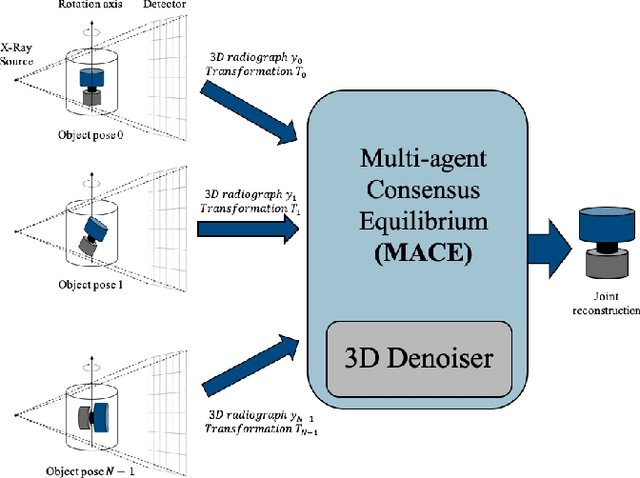

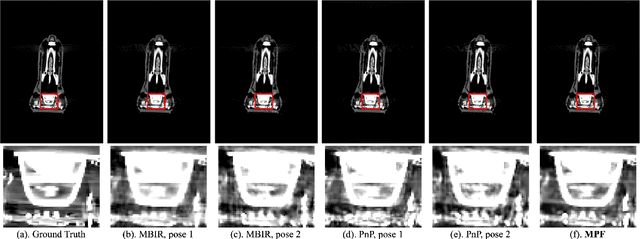

Abstract:CT imaging works by reconstructing an object of interest from a collection of projections. Traditional methods such as filtered-back projection (FBP) work on projection images acquired around a fixed rotation axis. However, for some CT problems, it is desirable to perform a joint reconstruction from projection data acquired from multiple rotation axes. In this paper, we present Multi-Pose Fusion, a novel algorithm that performs a joint tomographic reconstruction from CT scans acquired from multiple poses of a single object, where each pose has a distinct rotation axis. Our approach uses multi-agent consensus equilibrium (MACE), an extension of plug-and-play, as a framework for integrating projection data from different poses. We apply our method on simulated data and demonstrate that Multi-Pose Fusion can achieve a better reconstruction result than single pose reconstruction.
Multi-Slice Fusion for Sparse-View and Limited-Angle 4D CT Reconstruction
Aug 01, 2020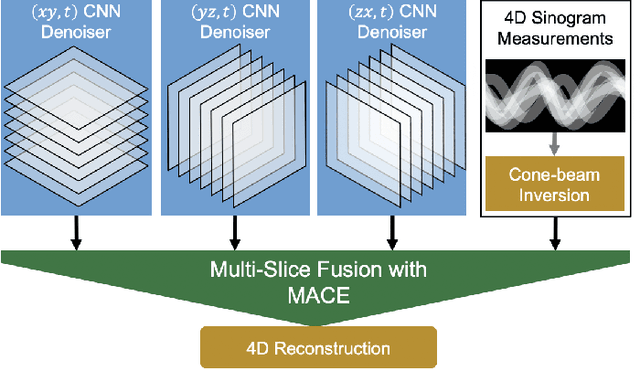
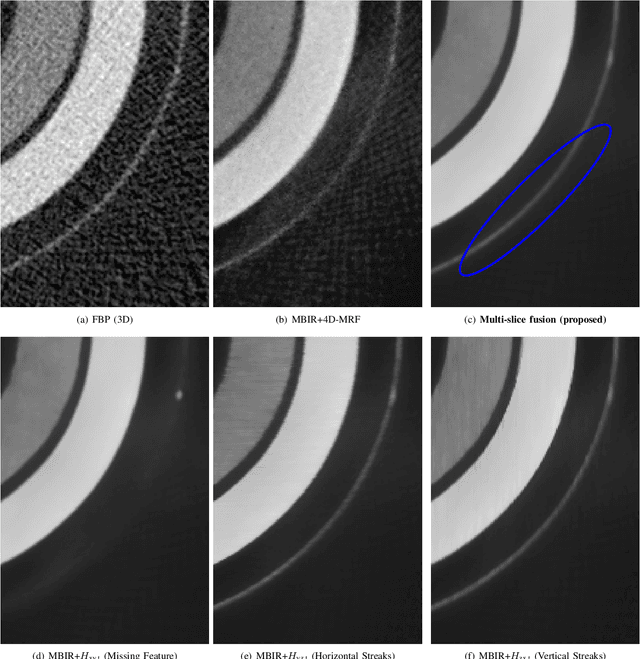
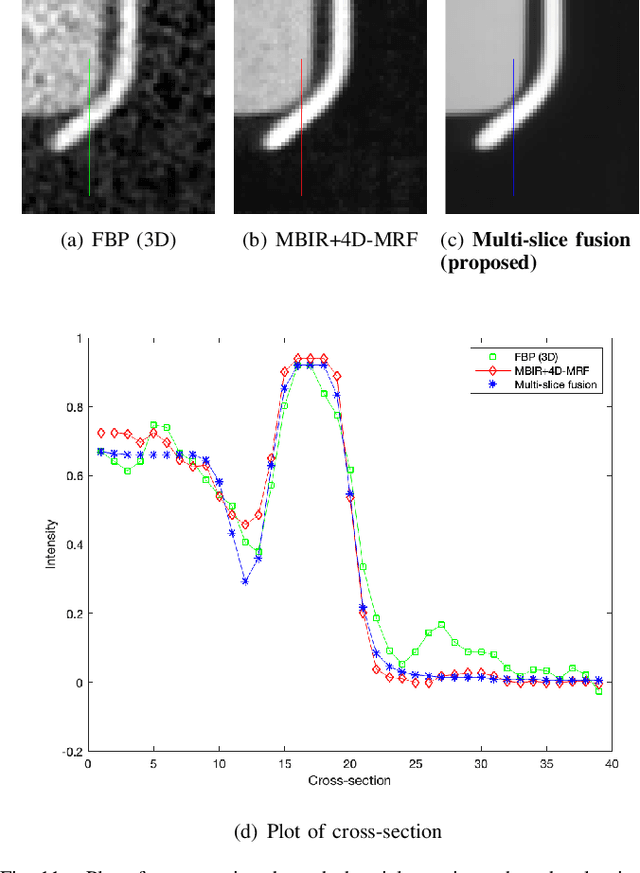
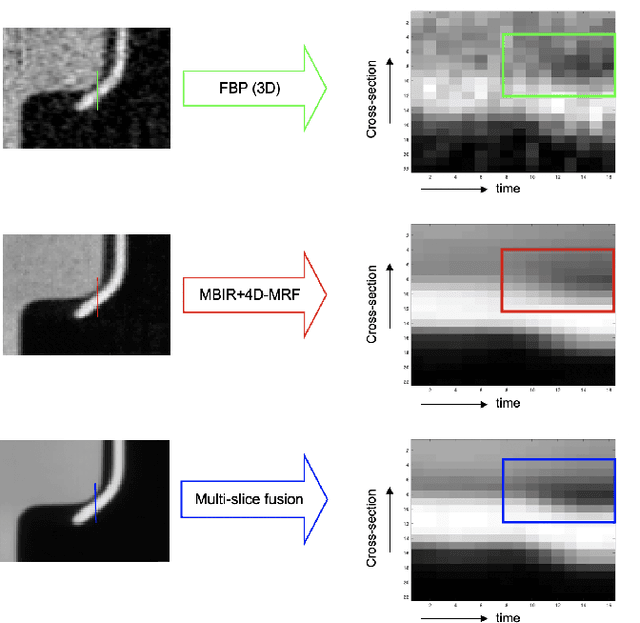
Abstract:Inverse problems spanning four or more dimensions such as space, time and other independent parameters have become increasingly important. State-of-the-art 4D reconstruction methods use model based iterative reconstruction (MBIR), but depend critically on the quality of the prior modeling. Recently, plug-and-play (PnP) methods have been shown to be an effective way to incorporate advanced prior models using state-of-the-art denoising algorithms. However, state-of-the-art denoisers such as BM4D and deep convolutional neural networks (CNNs) are primarily available for 2D or 3D images and extending them to higher dimensions is difficult due to algorithmic complexity and the increased difficulty of effective training. In this paper, we present multi-slice fusion, a novel algorithm for 4D reconstruction, based on the fusion of multiple low-dimensional denoisers. Our approach uses multi-agent consensus equilibrium (MACE), an extension of plug-and-play, as a framework for integrating the multiple lower-dimensional models. We apply our method to 4D cone-beam X-ray CT reconstruction for non destructive evaluation (NDE) of samples that are dynamically moving during acquisition. We implement multi-slice fusion on distributed, heterogeneous clusters in order to reconstruct large 4D volumes in reasonable time and demonstrate the inherent parallelizable nature of the algorithm. We present simulated and real experimental results on sparse-view and limited-angle CT data to demonstrate that multi-slice fusion can substantially improve the quality of reconstructions relative to traditional methods, while also being practical to implement and train.
4D X-Ray CT Reconstruction using Multi-Slice Fusion
Jun 15, 2019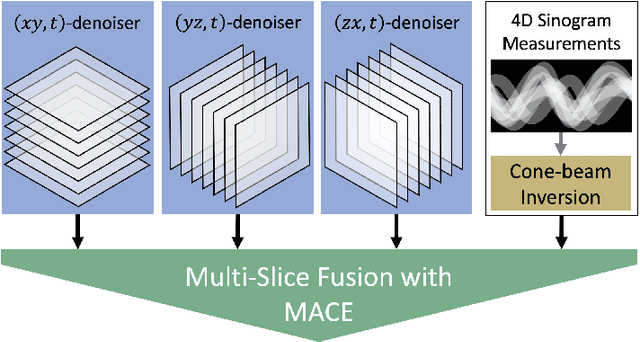
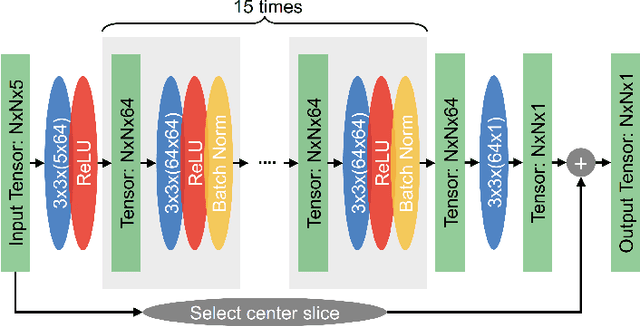
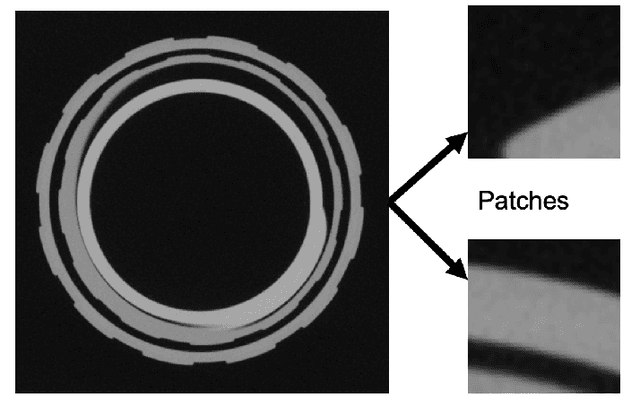
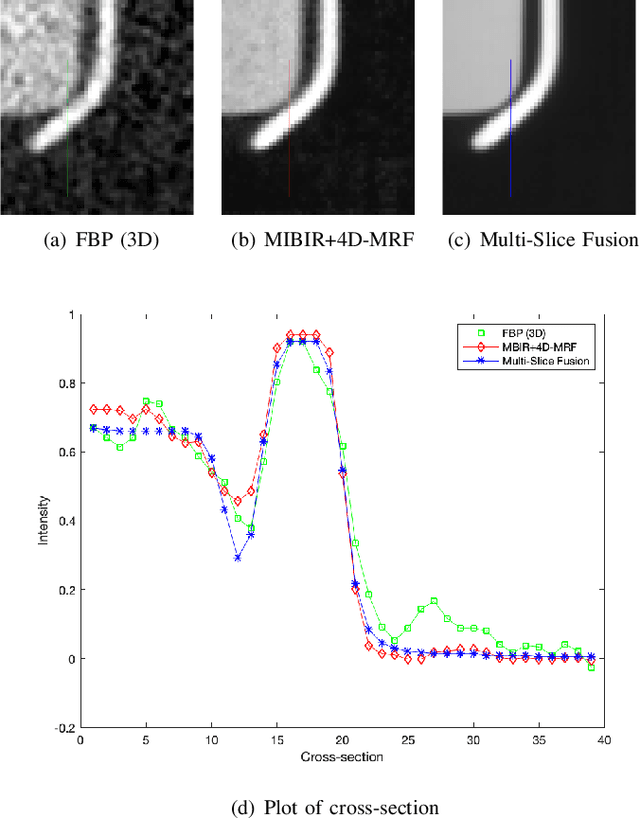
Abstract:There is an increasing need to reconstruct objects in four or more dimensions corresponding to space, time and other independent parameters. The best 4D reconstruction algorithms use regularized iterative reconstruction approaches such as model based iterative reconstruction (MBIR), which depends critically on the quality of the prior modeling. Recently, Plug-and-Play methods have been shown to be an effective way to incorporate advanced prior models using state-of-the-art denoising algorithms designed to remove additive white Gaussian noise (AWGN). However, state-of-the-art denoising algorithms such as BM4D and deep convolutional neural networks (CNNs) are primarily available for 2D and sometimes 3D images. In particular, CNNs are difficult and computationally expensive to implement in four or more dimensions, and training may be impossible if there is no associated high-dimensional training data. In this paper, we present Multi-Slice Fusion, a novel algorithm for 4D and higher-dimensional reconstruction, based on the fusion of multiple low-dimensional denoisers. Our approach uses multi-agent consensus equilibrium (MACE), an extension of Plug-and-Play, as a framework for integrating the multiple lower-dimensional prior models. We apply our method to the problem of 4D cone-beam X-ray CT reconstruction for Non Destructive Evaluation (NDE) of moving parts. This is done by solving the MACE equations using lower-dimensional CNN denoisers implemented in parallel on a heterogeneous cluster. Results on experimental CT data demonstrate that Multi-Slice Fusion can substantially improve the quality of reconstructions relative to traditional 4D priors, while also being practical to implement and train.
 Add to Chrome
Add to Chrome Add to Firefox
Add to Firefox Add to Edge
Add to Edge